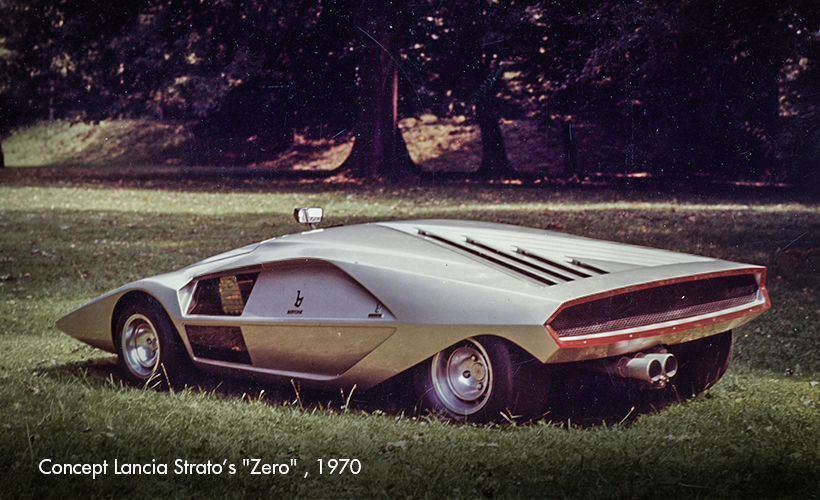
Lancia features at Pebble Beach Concours d’Elegance 2024
The futuristic 1970 Lancia Strato’s Zero prototype won its class and was one of the four finalists for the “Best of Show” award. This concept car was the basis for the legendary 1971 Lancia Stratos, a source of inspiration for future Lancia models, as seen in the New Ypsilon’s round taillights.
The 73rd Pebble Beach Concours d’Elegance (USA) has just drawn to a close, like the events at Villa d’Este (Italy) and Chantilly (France) the ultimate celebration of automotive elegance around the world. The prestigious occasion is the highlight of Monterey Car Week, nine days packed with events, which every year attracts thousands of classic and current production car enthusiasts from all over the world. As per tradition, the event took place at the Pebble Beach Golf Resort in California, with the Pacific Ocean as its breathtaking backdrop, and witnessed the participation of over 200 priceless vintage cars from 58 countries around the world.
The 1970 Lancia Strato’s HF Zero belongs to a U.S. collector and stood out by winning the “Wedge Concepts and Prototypes.” It turned out to be one of the most beautiful cars in the race, joining the shortlist for the coveted title of “Best of Show.” The futuristic car is a masterpiece of Italian design that brought about one of the most powerful and best-loved racing ‘beasts’ ever, the legendary Lancia Stratos HF, featuring primary shapes, radical geometries and round taillights, hallmarks that form part of Lancia design history. It is no coincidence that the iconic car is one of nine from the past that inspired the brand’s future models, as demonstrated by the New Ypsilon’s circular taillights.
Lancia Strato’s Zero prototype, a nonconformist legend of Italian design
Unveiled at the 1970 Turin Motor Show and built by Nuccio Bertone, based on a design by Marcello Gandini, the Lancia Strato’s Zero prototype immediately aroused great interest for its revolutionary lines. It was a fully functional vehicle, just 85 centimeters off the ground, which underwent a full restoration in 2000 to return it to its original color: bronze. The lights were innovative: in the front, a row of 55-watt bulbs, with a strip of lights consisting of 84 small bulbs standing out in the rear. The interior was also revolutionary, as seen in the practically horizontal seats and in the instrument panel shifted to the left and embellished with a green acrylic glass display. The windshield extends upwards, providing outstanding visuals for the front and top. The 115-hp 1.6-liter V4 engine – with two twin-barrel Solex carburetors taken from a Lancia Fulvia HF – and the central dual-tailpipe exhaust system highlight the prototype’s sporty spirit, on which the iconic Lancia Stratos would later be based for its road and racing versions.

